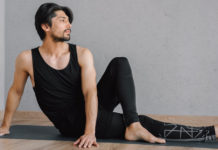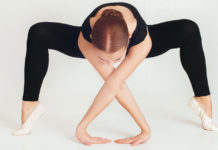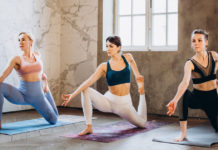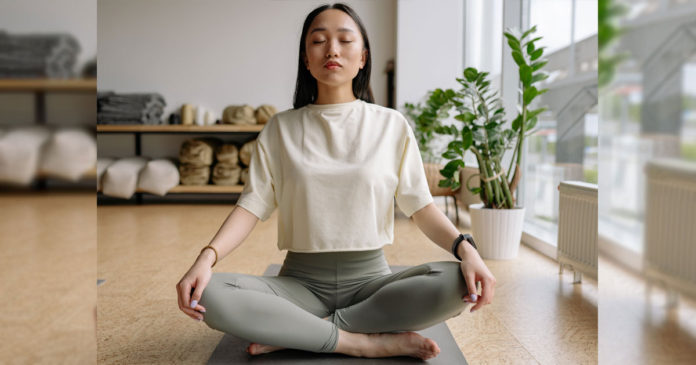An increasing number of people are using meditation to relax, improve their attention, and find inner peace. The significance of how to sit on a meditation cushion with the appropriate alignment and support is still often overlooked. A meditation cushion may be useful in this situation.
For individuals who meditate while seated, a zafu, sometimes called a zabuton, serves as a cushion and support. To ensure that you can sit for prolonged amounts of time without pain or disturbance, it makes it simpler to establish a steady and pleasant foundation for your practice.
You can keep good posture throughout your meditation session with the use of a meditation cushion, which is one of its key advantages. When sitting on the floor, slouching and hip, back, and leg discomfort may result from inadequate support. Enhanced focus and deep respiration are outcomes of maintaining an erect, comfortable posture, which is facilitated by understanding how to sit on a meditation cushion, selecting an appropriate cushion that aids in spinal and pelvic alignment.
Some meditation cushions may also help your body feel less stressed by supporting and padding your knees, feet, and hips. This is especially helpful for those who experience stiffness or discomfort in their joints.
Furthermore, making a space dedicated to your practice on how to sit on a meditation cushion helps to focus attention. Your mind is signaled to engage in introspection and focused attention when you intentionally set up your cushion.
The benefits of utilizing a meditation cushion and proper sitting technique will be covered in this section. Regardless of how long you have been meditating, understanding the value of how to sit on a meditation cushion can enhance your overall experience and build your link with yourself during this sacred hour of stillness.
Choosing the Right Meditation Cushion: Factors to Consider
Having the right cushion might greatly increase the comfort and enjoyment of meditation practice. Given the abundance of alternatives, how to sit on a meditation cushion and choose the optimal meditation cushion for their needs? In this section, we’ll examine the factors to consider while selecting a meditation cushion.
Additionally, when considering how to sit on a meditation cushion, the type should be taken into account. Other styles include zabutons, which are rectangular mats, zafus, which are circular cushions, and crescent-shaped cushions. Each kind offers varying degrees of support and stability, so it’s important to choose one that works well with the sitting position you’ve selected.
The optimal meditation cushion for an individual’s needs and preferences can be selected by considering the subsequent elements: seated posture, cushion variety, cushion dimensions, and height.
Proper Sitting Positions for Comfortable Meditation Sessions
Sitting in the right postures is essential to having a relaxed and concentrated meditation session. There are various ways to sit on a meditation cushion. Let’s examine on how to sit on a meditation cushion with different postures:
Cross legged position. One of the most basic and popular sitting postures for meditation is the cross-legged position. Put both feet beneath the other thigh while you sit on the couch with your legs crossed. As you let your knees softly contact the ground or cushion, maintain a relaxed and straight back.
Half-lotus. The second posture is called the half-lotus position, where one foot is on top of the other thigh and the other foot is beneath it. During meditation, this position offers balance and steadiness.
Full-lotus position: This pose is regarded as more difficult and calls for hip flexor flexibility. By positioning both feet atop the quadriceps opposite one another, a stable triangular foundation is established for the seated posture.
It is noteworthy that some individuals may find it difficult to maintain or attain these advanced positions, particularly if they have physical limits or disabilities. In these situations, choose a version that maintains your posture erect and fits your body’s comfort level, considering how to sit on a meditation cushion.
It is important to strike a pleasant equilibrium between awareness and relaxation while deciding on your meditation sitting posture. Try out various positions until you discover one that lets you sit for lengthy periods of time without experiencing strain or pain.
It is possible to improve concentration, encourage healthier breathing techniques, and provide a setting that supports the development of your meditation practice on how to sit on a meditation cushion with the correct postures throughout sessions.
Tips on How to Sit on a Meditation Cushion With Proper Alignment and Posture
When seated on a meditation cushion, proper alignment and posture must be maintained for the practice to be both enjoyable and fruitful.
You may assume the correct posture by using the following tips on how to sit on a meditation cushion:
- Pick the right meditation cushion: Be sure the cushion you select provides enough support and matches your body type. There are other varieties, such crescent- or zafu-shaped cushions, that might help elevate your hips and promote improved alignment.
- Find a tranquil and calm location: To assist establish an environment that is conducive to meditation, choose a quiet, serene location where you can sit without being bothered.
- Sit in lotus or cross-legged position: Sit on your cushion in lotus or cross-legged position. If discomfort is experienced in any of these positions, an alternative sitting position could involve extending your legs in front of you.
- Straighten your spine, but don’t tense it; instead, slowly lengthen it from your pelvis to your head. Imagine a cable pulling you upward from the top of your head.
- Shoulder relaxation: Embrace a relaxed shoulder position away from the ears in order to create space within your upper body.
- Rest hands on knees or in lap: Either put your hands palm down on top of each knee or rest them comfortably in your lap.
- Relax facial muscles: Gently massage your jaw, forehead, and surrounding muscles to release any tension in your face.
- Close your eyes or soften your gaze: If closing your eyes during meditation helps you focus inside, then go ahead and do so. If not, maintain a soft focus on the ground a few feet front of you.
It’s crucial to remember that proper alignment and posture during meditation are necessary to promote deep relaxation, enhance attention, and facilitate energy flow throughout the body. With time, you’ll get used to and more at ease on how to sit on a meditation cushion.
Sitting Techniques to Enhance Your Mindfulness Practice on a Cushion
To become better at practicing how to sit on a meditation cushion, you must adopt proper sitting techniques. The way you sit affects how focused you can be and how deeply aware you can become. In this section, we’ll examine several helpful sitting techniques that will enhance your time spent on a meditation cushion.
You may improve your practice by combining breath awareness exercises with mindful body scans. When practicing how to sit on a meditation cushion. It begin at the top of your head and work your way down to your toes, start by concentrating your attention on different body regions. Take note of any sensations or stiffness in each body area as you scan it over, and then consciously release any tension.
By practicing these techniques on how to sit on a meditation cushion, you may create an environment that promotes focus and enhanced self-awareness.
Troubleshooting Common Challenges While Using a Meditation Cushion
While utilizing a meditation cushion might help you meditate more effectively, there can be some initial challenges. This section will address common issues that individuals have while using a meditation cushion and provide solutions.
One of the most common issues on how to sit on a meditation cushion is incorrectly positioning oneself while sitting on a cushion. It’s important to choose a comfortable posture that promotes stability and relaxation. Place the cushion on the ground and, with your legs crossed, choose a comfortable spot to sit toward the front edge. You might also try kneeling or sitting with one leg folded in front of you for extra support.
An additional challenge is pain or discomfort on how to sit on a meditation cushion. This might be the result of improper alignment or insufficient support. If discomfort persists, elevate your hips slightly above your knees by using more cushions or folded blankets. This helps to maintain proper spinal alignment and reduces lower back discomfort.
You may increase the comfort and enjoyment by using a meditation cushion by addressing these common problems and developing practical solutions, including on how to sit on a meditation cushion.
Mastering the Art of Sitting Comfortably on Your Meditation Cushion
Make sure you have a straight yet flexible back if you want to correctly how to sit on a meditation cushion. Think of a rope slowly lengthening your spine as you raise your head toward the sky. Lean back your shoulders a bit and become more relaxed to facilitate easy breathing.
You may easily put your hands on top of each other on your lap or place them palm down on top of each knee. Select a hand position that feels natural and comfortable for you.
Take your time positioning yourself on the cushion until you feel stable and in control. Release any muscular tension as you get comfortable in this sitting position.
Remember that you need to be comfortable while you meditate. After some time, if sitting cross-legged becomes uncomfortable, experiment with other postures or use pillows or other supporting surfaces.
By learning how to sit on a meditation cushion, you may lay the finest possible physical foundation for cultivating inner peace and expanding awareness throughout your meditation practice. With patience and regular practice, you may correct your posture and find the posture that feels best for you.











